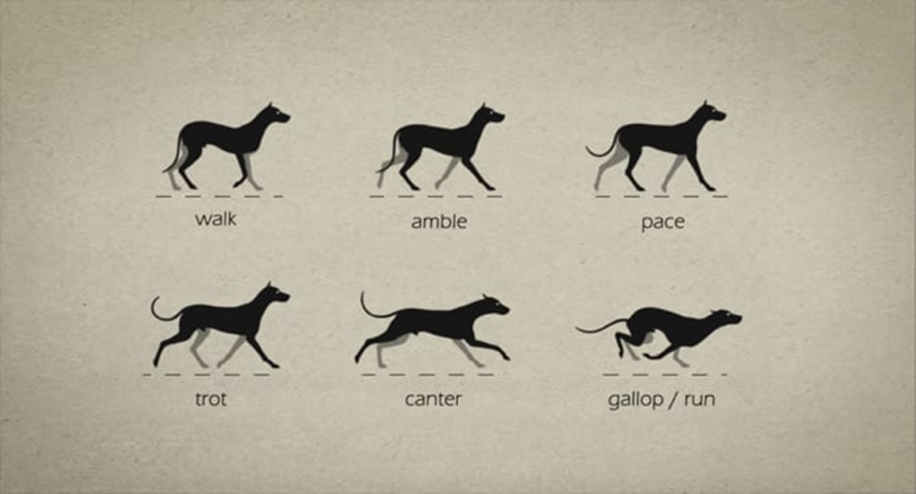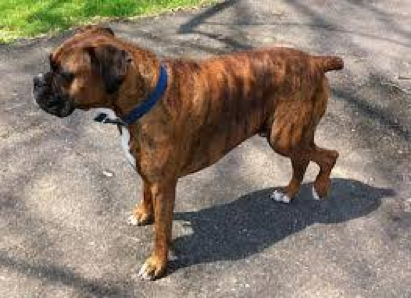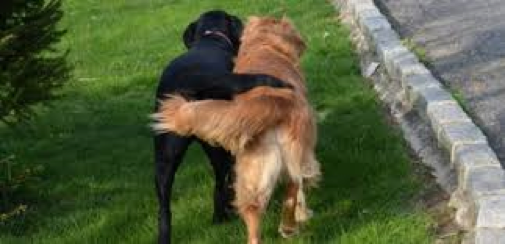| print
link to this post | email a friend Gait Analysis - What different ways of moving can tell you about your dog21 Dec 2020 Sue Van Evra, BSc, MSc, BHSc(PT), Diploma in Canine Rehab Here at the Canine Fitness Centre we are often asked questions about how dogs are moving; ‘why does my dog’s tail only swing one way when he walks?’, ‘why does my dog’s head bob up and down when she is trotting?’ or ‘is my dog’s waddle normal?
Normal Gait In order to understand abnormal movement patterns, it’s helpful to look at normal gait patterns first. The main dog gait patterns are; walk, amble, pace, trot, lope and gallop. A walk is the slowest pattern and during a walk, there are always 3 paws on the ground to support the body. Each foot lifts from the ground one at a time in a regular sequence. An amble is basically a faster walk – the legs on the same side almost move as a pair, but hit the ground slightly one after another. A pace is a gait pattern where the legs on the same side move forwards and backwards exactly as a pair. A trot is a faster gait where opposite front and hind limbs move forward together. The weight is transferred between the pairs of legs and for a very brief period of time, all legs are suspended in the air. A lope/canter is a faster gait where one rear leg strikes the ground, followed by the other rear leg and opposite front together, then finally the 4th leg. A gallop is the fastest of all gait patterns and has an extra period of time when all 4 paws are off of the ground. The pattern of movement tends to be the left front limb, then right front limb hits the ground, a period where no paws are on the ground, then left hind limb, and finally right hind limb hits the ground.
A dog will use any of these gait patterns depending on how fast they need to go – although sometimes a dog’s conformation makes them more likely to prefer one pattern over another. For example, long legged dogs with short bodies might choose a pace because it prevents their rear legs from interfering with the forelimbs.
Abnormal Gait What we typically look for when we are screening for injuries is symmetry. In other words – is one side of the body doing something different than the other? This often indicates that somewhere there is an area of dysfunction, injury and/or pain. Here are some examples:
In some instances, some of the gait patterns listed as ‘normal’ can actually fall into this ‘abnormal’ category:
So, in answer to some of the questions about your dog – Max’s ‘waddle’ may be perfectly normal! – but if it is a new gait pattern for him, or is exaggerated – time to bring him in! Any time you see something asymmetrical – this is a sign that something is wrong and we can help figure out what it is and how to resolve it! Please contact the Canine Fitness Centre (403)204-0823 for more information!
|

|




